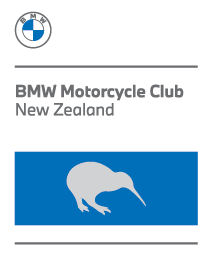Home › Forums › General Discussion › Gull force 10 or E10
-
AuthorPosts
-
Anonymous
Guest04/08/2007 at 6:47 amPost count: 2134I was wandering about the new ethanol fuel from Gull and rang experience BMW. they didn't quite know. But I found this on an aussi web-site: http://www.abc.net.au/brisbane/stories/s1466787.htm "BMW All motorcycles since 1986 will operate satisfactorily on E10." Just in case somebody is interested.
Thanks for the info. I guess I won't be using it for a while yet. I want my bike to run at a 100% not just satisfactorily.
And the question is this,,,, so you will still be able to do 100km/h with the high octane as with 91. 😕 😕
I wont be using it! The BMW engineers did not design the engine for this fuel. ipso facto.Better the devil you know, than the one you don't!Look what happened last time they tinkered with the fuel. I remember seeing on TV a Jaguar "E" Type just 'chassis-up' restored, and the fuel had totally wrecked the new paint.
And the question is this,,,, so you will still be able to do 100km/h with the high octane as with 91. 😕 😕
No, no, no. The question ought to be “should I be using Gull Force 10 at all”? Gull Force 10 has an octane rating of 98 and this doesn’t come along every day. If it’s best for your bike, and you are of a bent to consider the environment as well, then why wouldn’t you use it, assuming price is not an issue?The octane rating of gasoline tells you how much the fuel can be compressed before it spontaneously ignites. When petrol ignites by compression rather than because of the spark from the spark plugs, it causes knocking in the engine. Knocking is not something you want to have happening. Lower-octane gas (like our "regular" 91) can handle the least amount of compression before igniting. The compression ratio of your engine determines the octane rating of the gas you should be using in your bike. One way to increase the horsepower of an engine of a given displacement is to increase its compression ratio. So a "high-performance engine" has a higher compression ratio and requires higher-octane fuel. The advantage of a high compression ratio is that it gives your engine a higher horsepower rating for a given engine weight -- that is what makes the engine "high performance." The disadvantage is that you’re petrol costs you more per litre. If you’re running an octane rating higher than your engine needs you’re basically wasting your money, there is no real performance gain for the extra dollars.Pure ethanol — made from renewable plant sources like corn, wheat and sugarcane — has an octane rating of 113, compared with 107 for methanol (another potential mixer for bio-fuel) and 91 to 95 for our domestic petrol.If your bike is fuel injected (waste of time, and potentially destructive, using Gull Force 10 if you’ve got carbs), has a high compression ratio and 98 octane is the best fuel to run it on, why wouldn’t you opt for it?
Anonymous
Inactive09/08/2007 at 6:55 amPost count: 43Garrys post is very interesting, I run 3 similar engines in one of my bikes, one on pump gas at 9/1 comp one on av gas 10/1 and one on dope{methanol ether and acetone}and a bit of notromethane at 15/1 . the dope engine uses 3 times the amount of fuel for a power gain of 48% over the Pump gas. I wonder if the ethanol blend would benefit from a bit of rejetting.On a reacent road test in my car I found for same KMs on 91 I used less fuel for the same distance on 98 for a similar price and didnt have the pinking or knocking.I believe that BMW design their engines to run on any fuel and oil because as a global touring bike they are subject the a vast variation in product.Pete.
I believe that BMW design their engines to run on any fuel and oil because as a global touring bike they are subject the a vast variation in product.Pete.
Almost there Pete, BMW design their engines not so much to run on any fuel but to run even on the poorest quality fuel, their recommendation is still to run the most appropriate octane rating available for optimal performance. The new engine generation of both the new flat twin and the transverse inline engine have a knock control system. This system has sensors which identify uncontrolled combustion in each cylinder, with the electronic management system then adjusting ignition timing accordingly. This is what avoids potential damage due to the fuel having a lower octane rating. As a result, the flat twin engine designed for use with premium fuel can also be run on fuels of lesser quality, that might commonly be available in distant countries. The HP is a good example, runs best on higher octane 95/98 but will run on 91 albiet slightly less than optimal performance.CheersGarry
Anonymous
Inactive09/08/2007 at 8:30 amPost count: 43Thanks Garry I wondered why the ignition timing changed by itself when we changed the exhaust and fuel on the Dyno .
-
AuthorPosts
- You must be logged in to reply to this topic.
